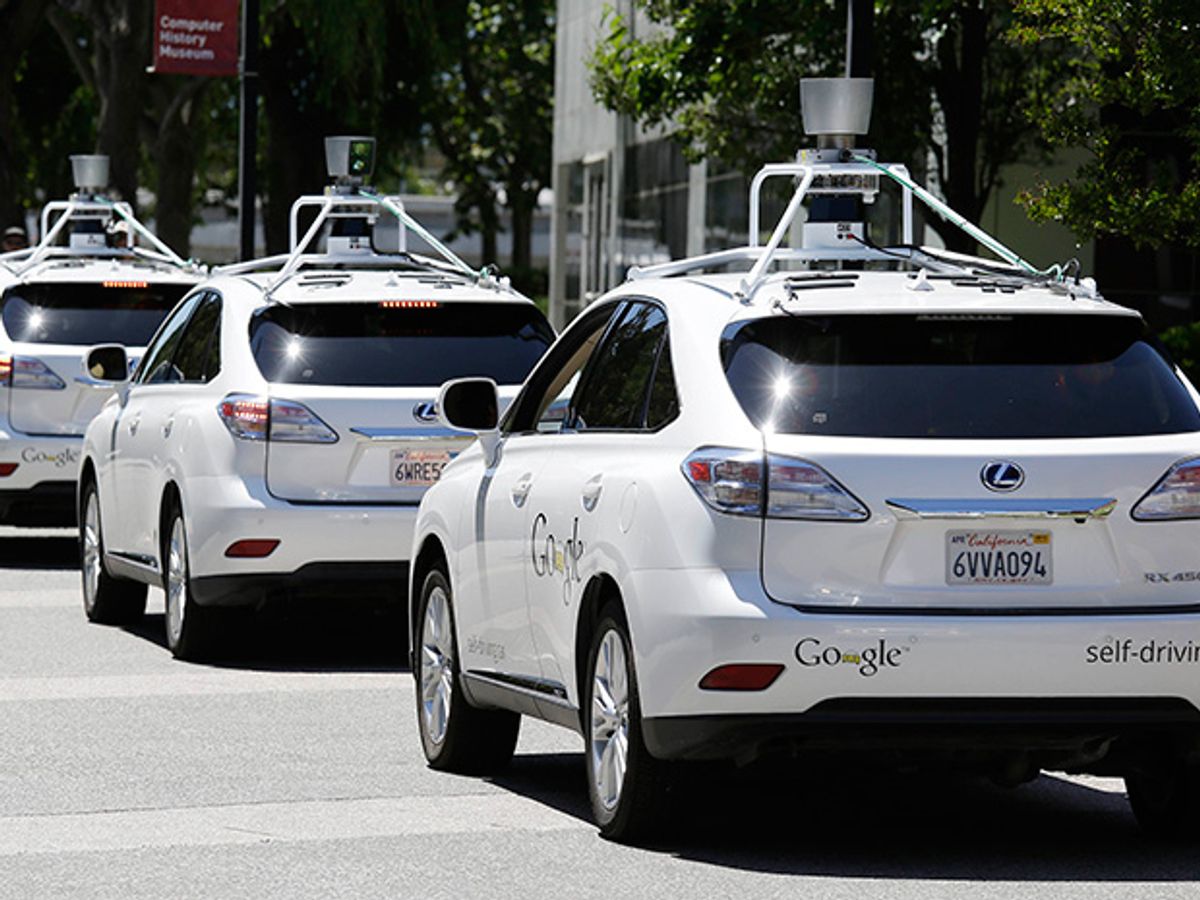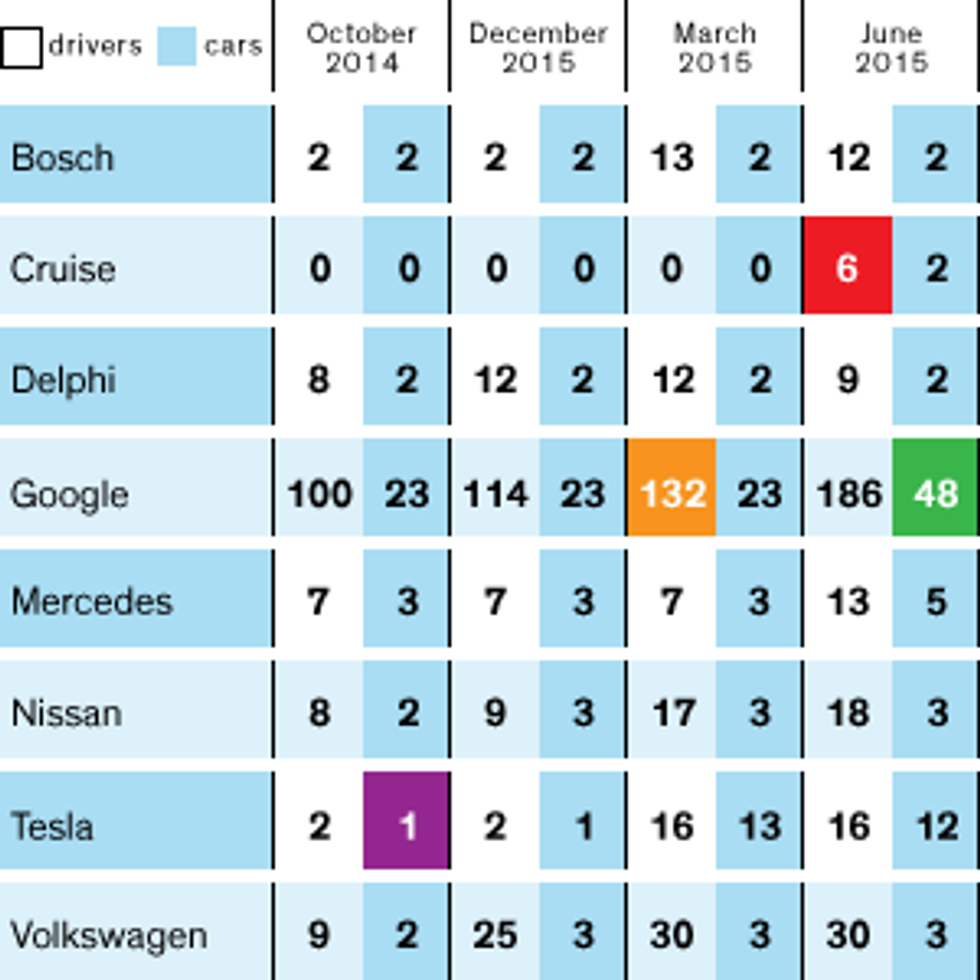California almost certainly has more self-driving cars and operators on public roads than the rest of the world. That the state is experiencing an autonomous gold rush should not come as a surprise. For a start, its reliably mild, dry, and sunny climate is perfect for road-testing early generations of vehicles that still balk at snow, fog, and heavy rain.
Neighboring Nevada is similarly meteorologically blessed and began licensing experimental autonomous cars several years ahead of California. But the Golden State has the advantage because it’s also home to Silicon Valley, where everything a prospective driverless car manufacturer needs—software engineers, hardware geeks, roboticists, venture capital—is available in a near-endless supply. Virtually every large technology company—and most mainstream automakers—have offices in the Bay Area.
Robocars on California Roads
Carmakers in California must register self-driving vehicles and their operators, each of whom has to pass a safety driving course
Prior to last September, autonomous vehicles did not have to be registered in California. Google has been testing modified Prius and Lexus cars on public roads here since 2009.
Tesla put a semiautonomous Model S electric car on California’s highways in October—and hoped to push the technology to Model S owners less than a year later.
Google’s drivers account for nearly two-thirds of all operators of self-driving cars in California.
The latest company to receive a testing permit is Cruise Automation, which intends to offer an aftermarket autonomy kit for Audis later this year.
The uptick in vehicles is due to more than 20 of Google’s latest steering-wheel-free prototypes hitting the road. They are the first purpose-built self-driving cars to make it this far.
Source: California Department of Motor Vehicles
But the main reason for California’s supremacy in vehicular automation is the presence of a single company. While Google did not invent the self-driving car, it can lay claim to having invented the industry of self-driving cars—purchasing startups, hiring experts, and developing essential mapping and navigation technologies. From the word go, Google has remained one step ahead of the competition. It was the first to test experimental vehicles at scale, the first to move from relatively safe highways to unpredictable city streets, and the first to construct a purpose-built, steering-wheel-free, self-driving prototype. Even today, after the arrival of global carmakers and upstarts like Tesla, Google has around twice as many autonomous vehicles and drivers on California’s roads as everyone else combined.
Of course, California’s dominance in self-driving cars is hardly guaranteed. Mcity, a secure urban testing environment for high-tech cars at the University of Michigan, is hoping to lure traditional Detroit carmakers, and the state already has some of the most industry-friendly regulations. The United Kingdom and France opened their streets to experimental autonomous vehicles earlier this year, while the Chinese tech giant Baidu has been busy testing self-driving cars (developed with BMW) around Beijing and Shanghai.
But California still has a few tricks up its sleeve, such as its own connected and autonomous test center, a 20-square-kilometer former naval weapons site in Concord called GoMentum Station. And if, as some observers suggest, Apple is working on its own high-tech car, California should continue to boast the most roboticized roads in the world well into the future.

